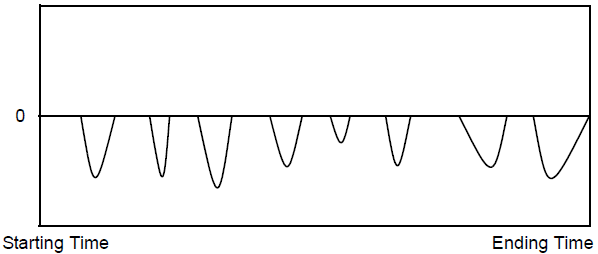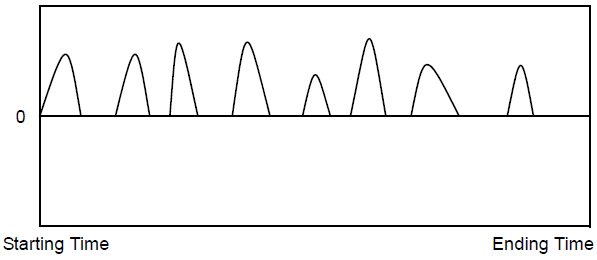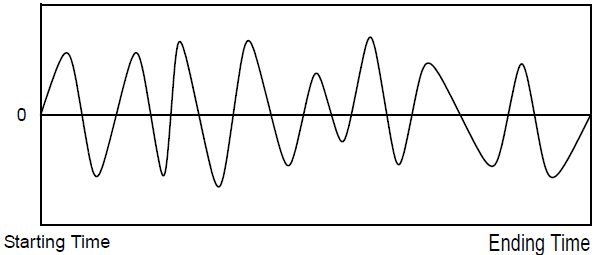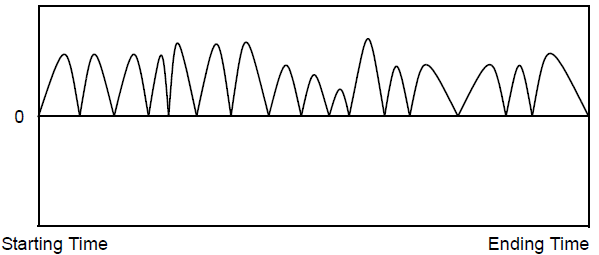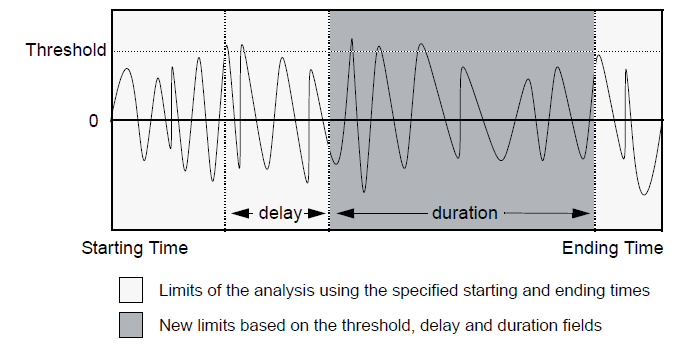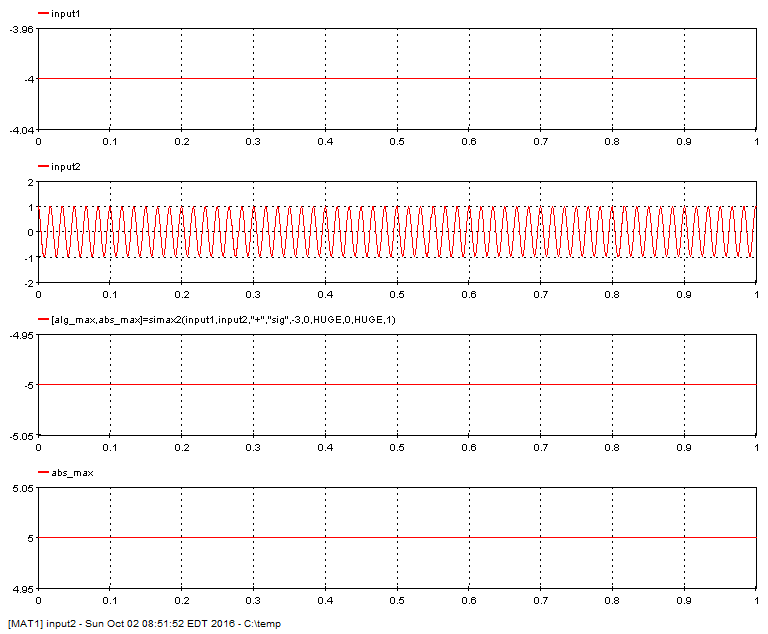Documentation Home Page ◇ HYPERSIM Home Page
Pour la documentation en FRANÇAIS, utilisez l'outil de traduction de votre navigateur Chrome, Edge ou Safari. Voir un exemple.
Advanced | SIMAX2
ABSOLUTE MAXIMUM – [SIMAX2]
Computes the absolute or algebraic maximum of a signal resulting from a mathematical operation between two signals.
CATEGORY
Advanced
DESCRIPTION
This function allows computing the absolute or algebraic maximum of a signal, or of a part of it, resulting from a mathematical operation between two signals. The zone on which the analysis is performed can be specified using time or using or a threshold condition.
RESULT VARIABLES AND PARAMETERS
| Algebraic Maximum | Maximum of the resulting signal multiplied by the factor. An algebraic or absolute result on an absolute or positive part of a signal does not affect the result. Similarly, the algebraic result on the negative part of a signal is negative, unless the time interval found for the analysis is null. |
| Absolute Maximum | Absolute maximum of the resulting signal multiplied by the factor. |
| Signal 1 | First input signal to perform the mathematical operation |
| Signal 2 | Second input signal to perform the mathematical operation |
| Operation | Operation to execute between the two signals to analyze (+, - , *, /) |
| Signal_Part | Part of the signal on which the analysis is done (neg, pos, sig, abs). |
| Here are the definitions for the four distinct parts of a signal: | |
| Neg | Only the negative values of the input signal are used for the calculations. The other values are considered to be null. |
| Pos | Only the positive values of the input signal are used for the calculations. The other values are considered to be null. |
| Sig | The original input signal is used for the calculations. |
| Abs | The calculations are done on the absolute value of the input signal. |
| Threshold | The threshold, delay, and duration parameters restrict the limits of an analysis. The threshold is the value to reach to start the analysis from the begin_time. If the threshold is positive, the threshold will be reached when the value of the sample is greater than that of the threshold. If the threshold is negative, the threshold will be reached when the value of the sample is smaller than that of the threshold. A null threshold sets the threshold equal to the starting time. The threshold value must be compatible with the signal part specified. If the positive part of a signal is specified with a negative threshold, this threshold will never be reached. |
| Delay | When the threshold time is determined, a delay is added to it. The new starting time of the analysis is thus equal to the time taken to reach the threshold plus the delay. The delay is specified in milliseconds [ms]. |
| Duration | The duration parameter serves to determine the ending time of the analysis. This ending time will be equal to the new starting time with the delay plus the specified duration. It is possible to specify HUGE as duration indicating that the ending time will be the end of the analyzed signal. This duration is specified in milliseconds [ms]. |
| Begin_time | Time at which the analysis of a signal must start. This time is expressed in milliseconds [ms]. This value must be greater than 0 and lower than the size of the acquisition buffer. The default value is 0. |
| End_time | Time at which the analysis of a signal must end. This time is expressed in milliseconds [ms]. The value of this time must be larger than the specified begin_time and smaller than the duration of the test. Use the “HUGE” value to specify the end of the test. The default value is HUGE. |
| Factor | Multiplying factor for the results generated by the function. The default value of the multiplying factor is 1.0 and has no effect on the results. |
SYNTAX
[alg_max, abs_max] = simax2(input1, input2, "+", "sig", 0.5, 0, HUGE, 0, HUGE, 1)
CHARACTERISTICS
Data type support
Double Floating point
EXAMPLE
The following figure shows absolute and algebraic maximum for the sum of sine wave signal and a constant value.
The following diagram shows the different results computed by this function.
OPAL-RT TECHNOLOGIES, Inc. | 1751, rue Richardson, bureau 1060 | Montréal, Québec Canada H3K 1G6 | opal-rt.com | +1 514-935-2323
Follow OPAL-RT: LinkedIn | Facebook | YouTube | X/Twitter

